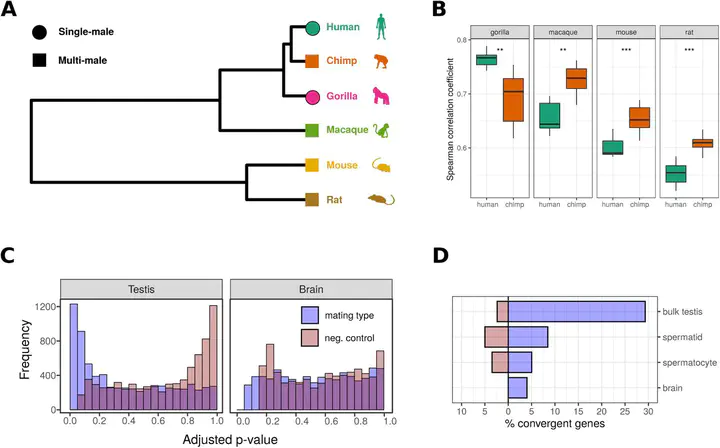Convergent evolution of primate testis transcriptomes reflects mating strategy (Research Article)
 Figure 1 - BioRxiv
Figure 1 - BioRxiv
Abstract
In independent mammalian lineages where females mate with multiple males (multi-male mating strategies), males have evolved larger testicles relative to those lineages where females mate with fewer males (single-male mating strategies). Here we study published bulk testis transcriptomes from humans, chimpanzees, gorillas and rhesus macaques, as well as mice and rats. Employing a formal model of adaptive evolution, we find that testis transcriptomes have also evolved convergently, reflecting each species’ mating strategy. Using deconvolution, we infer that testis transcriptome divergence patterns largely reflect convergent shifts in tissue cell type composition. However, we also identify modest amounts of convergent evolution at the cell-autonomous level by analyzing cell-type specific transcriptome data from spermatids and spermatocytes. We further show that in the single-male mating primates, human and gorilla, testis transcriptome profiles are paedomorphic relative to those of multi-male primates, chimpanzee and macaque, suggesting that shifts in timing or rate of testis development could underlie convergent changes in testis mass, histology, and transcriptomes.